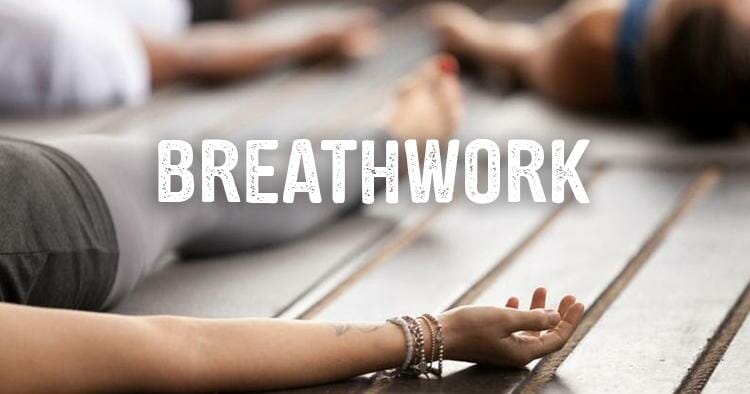For those who tuned into Ask the Coach this past Wednesday you will recognize this as the topic covered. For those of you who did not tune in, here is a breakdown of what we went over and a little more depth into some thoughts.
Breathwork has become an increasingly popular and buzzword worthy topic in the fitness industry. Breathwork essentially encompasses any and all conscious breathing exercises that are used to help influence someone’s emotional, mental, or physical state. Coaches tell their clients and athletes that they need to breathe a certain way or hold different positions while they breathe deep before they ever start picking up weights. Although there is merit and a reason for this new approach, I believe it is not well understood by most trainers and coaches. Therefore many clients are being left bemused and bewildered about breathing and struggling to understand why how they breathe might be considered “wrong”. Hopefully I can answer some of these questions…
Physically, here is how things should ideally work. This is a ribcage.

Lots of bones. 24 ribs between true and floating ribs. Within the ribcage are your lungs and heart.

The lungs are where we exchange the oxygen we breathe in with the carbon dioxide we produce as a waste product from our muscles. The lungs are incredibly efficient at this process, with the inner surface area of the lungs (i.e. the area where this gas exchange is possible) equal to the approximate size of a tennis court. That is a lot of area packed into our chests. In order for use to pull air into our lungs to allow this exchange to take place, we need to inhale, using the respiratory muscles, specifically the diaphragm.

When we inhale the diaphragm pulls down into our stomach, creating a vacuum in our chest that pulls air into the lungs. As the diaphragm descends, the ribs have to rotate up (think of it like the handle of a bucket) to make room for the expanding lungs. With this expansion, our trunk will expand in all directions too, not just forward but there should be expansion out to the side and our back too. Think of how a balloon expands when you blow it up, same thing should happen here. When we exhale, after the exchange of oxygen, the diaphragm domes back up and the ribs rotate back down (again, think bucket handle) and everything compresses, just like when you let the air out of a balloon.
This is how things should work in a perfect world and perfectly functioning and moving human body. However, overtime as prolonged sitting, more sedentary lives, general day to day stress, and old or new injuries take their toll, our ability to move optimally is restricted and small issues start to creep in.
The largest of these issues is when we only breathe into our upper chest rather than into our diaphragm and stomach. This chest breathing happens when our ribcage gets “stuck” in the inhalation position (ribs rotated up), usually due to some compensatory strategy or an overactive stress response. When the rib cage gets stuck in this inhalation position, the diaphragm is unable to dome up properly and therefore can not get a full inhalation. When this happens, accessory muscles get used, such as the intercostals and scalenes, to help pull air into the lungs, aka chest breathing. The other major issue is that because the rib cage gets stuck, movements that require a moving rib cage, such as running, walking, swinging a golf club or baseball bat, or throwing become more challenging and compensatory strategies become common.
The example I used in Ask the Coach was of the lower cross syndrome. When the ribs are rotated up, the chest lifts, like you are puffing your chest out a bit. When that happens, if your internal and external obliques and transverse abdominis (TA) muscles are weak, your low back will extend and your hips will dip forward (another way to think of it would be that your belt buckle points towards the ground). Stand up and try it; stand tall, puff your chest out, and feel what happens to your low back.. For most people, this is what happens every time you breathe, your ribs lift (and get stuck, so you have to lift more to get air in) and your low back flexes because of that lifted position, causing your hips to get pushed out of whack and your low back to eventually start hurting.
The next two questions that should be asked are, first, but why do these issues happen? And second, how does breathwork help to address these issues? To answer the first question… well, it’s complicated, and I will get into this next week, but the predominant reason, in my opinion, is stress and an unrelenting stress response.
As for the second question, how does breathwork prior to working out help address these issues, it does so by helping reestablish the balance/integrity of your obliques and TAs, in addition to helping get your ribs back to the bucket handle down position, aka the exhaled position. In this position, your TAs and obliques are better positioned to maintain integrity through your anterior core as you move, meaning that your back and spine do less of the heavy lifting/moving and are there instead to support the movements. Think about it, if we go around with our ribs up and our back extended, the muscle of our back are shortened and therefore at an advantage for doing work (it’s easier to do a bicep curl when your arm is already bent than when its fully extended) compared to our anterior core (abdominals). So to counteract that, and use muscle that is better designed and oriented for movement, the breathwork at the beginning of a session is all about getting the ribs down and in this exhaled state, so our abs work better, we are more stable throughout our movement, and when we need to take a breath in as we are working, it’s easier to do that as well.
So in a nutshell, breathwork is done at the beginning of a workout to improve the position the body is in so that when you do work, it is easier, safer, and more effective as a stimulus for change and adaptation.
Next week I’ll get into the stress response and the changes that occur due to that and the ways in which breathwork can be used to help correct issues that arise. Until then, any questions direct to my email [email protected] or find us on Instagram and Facebook at @goaldrivenhabits.

